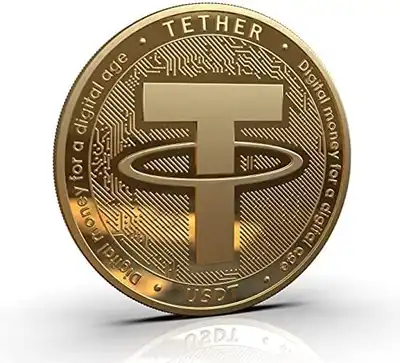Tether, often abbreviated as USDT, is a prominent cryptocurrency that has gained substantial popularity in the digital asset market. Launched in 2014, Tether operates as a stablecoin, which means its value is pegged to a fiat currency, usually the US Dollar (USD). The primary purpose of Tether is to provide a bridge between traditional financial systems and the fast-growing world of cryptocurrencies, offering users a stable and familiar currency within the volatile crypto space. To achieve this stability, Tether relies on various blockchain technologies, including the Omni Layer, Ethereum, Tron, and others. In this article, we will delve into the blockchain technologies that underpin Tether and explore how each platform contributes to the stability and functionality of this influential stablecoin.
- Omni Layer Protocol
The Omni Layer, previously known as Mastercoin, is a platform that runs on top of the Bitcoin blockchain. It was one of the earliest blockchain technologies adopted by Tether to issue its stablecoin. The Omni Layer protocol enables the creation of custom tokens, such as Tether, by utilizing the Bitcoin blockchain’s security and decentralization features. Tether tokens based on Omni Layer are often referred to as “Tether Omni” or “Tether on Bitcoin.”
The process of creating Tether on the Omni Layer involves the issuance of tokens representing the equivalent amount of fiat currency held in reserve. These tokens are then tethered to the value of the corresponding fiat currency, such as the US Dollar. The issuance and redemption of Tether Omni tokens are facilitated through a set of smart contracts on the Bitcoin blockchain, ensuring transparency and auditability of the stablecoin’s supply.
The use of the Bitcoin blockchain provides Tether with a level of security and immutability that is inherent in the world’s first and most well-known cryptocurrency. However, it also faces some limitations. For example, the Bitcoin network’s block time can lead to slower transaction confirmations, and the blockchain’s scalability concerns have occasionally resulted in higher transaction fees.

- Ethereum Blockchain
In 2017, Tether expanded its reach by introducing a version of its stablecoin based on the Ethereum blockchain. Tether on Ethereum, often referred to as “Tether ERC20,” conforms to the widely adopted ERC-20 standard, which defines a set of rules and guidelines for creating fungible tokens on the Ethereum network.
By migrating a portion of its supply to the Ethereum blockchain, Tether gained access to the platform’s faster transaction times and smart contract capabilities. This change allowed for increased efficiency in issuing and managing Tether tokens. The ERC-20 standard also improved interoperability, making it easier for Tether to integrate with various decentralized applications (DApps) and decentralized exchanges (DEXs) within the Ethereum ecosystem.
Moreover, Ethereum’s programmability opened up a wide range of possibilities for Tether. Smart contracts allowed for more advanced financial instruments, such as decentralized lending platforms and automated trading strategies, to be built on top of the stablecoin. This contributed to the broader DeFi (Decentralized Finance) movement and increased the use cases and adoption of Tether within the Ethereum ecosystem.
In 2019, Tether further expanded its presence by launching a version of its stablecoin on the Tron blockchain. Tether on Tron, often referred to as “Tether TRC20,” operates based on the TRC-20 standard, which is similar to the ERC-20 standard but designed specifically for the Tron network.
By utilizing the Tron blockchain, Tether gained access to high transaction throughput and low fees, which are essential for serving a large user base efficiently. Additionally, the Tron blockchain’s high scalability and robust smart contract functionality offered Tether greater flexibility in its operations and use cases.
The integration with Tron also aligned Tether with a vibrant and active community, expanding its reach to new users and developers. Tether TRC20 became a popular stablecoin choice within the Tron ecosystem, facilitating various DeFi applications, gaming platforms, and other blockchain-based projects that required a stable and widely accepted digital asset.
- Other Blockchain Integrations
Apart from the Omni Layer, Ethereum, and Tron blockchains, Tether has also integrated with other blockchain platforms to expand its usability and reach. Some of these integrations may include EOS (Tether EOS), Algorand (Tether ALGO), and Solana (Tether SPL).
These additional blockchain integrations provide Tether with diverse ecosystems, catering to specific needs and preferences of users within those networks. Each integration offers its unique advantages, such as high throughput, low fees, or specific use case support. Moreover, Tether’s presence on multiple blockchains contributes to its overall stability as it is not solely reliant on one blockchain network.




